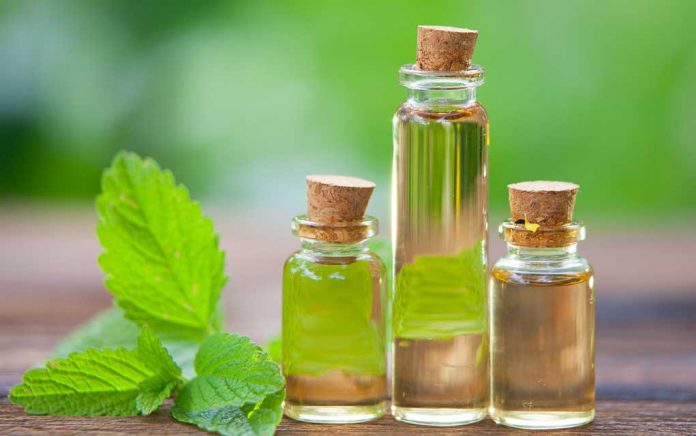
Mint is an ancient herb that was prevalent in medieval herb gardens; its use both as a herb and as an oil is not new. However, it might be that different types of mints were used for different conditions and purposes, as there is more than one type of mint species that has medicinal uses. Peppermint, spearmint and cornmint are three types of mint that have therapeutic properties.
Historical Use of Mint
Mint was common in European herb gardens. However, it is possible that both spearmint and peppermint were used interchangeably and perhaps confused with one another in written medieval texts because I have found conflicting “evidence” of the origin of peppermint.
According to Julia Lawless in The Illustrated Encyclopedia of Essential Oils evidence of the use of peppermint (Mentha piperita) was found in ancient Egyptian tombs; Patricia Davis, in Aromatherapy: An A -Z, also writes that peppermint was used by the Romans and, most likely, the Egyptians too. However, Marina Heilmeyer writes in Ancient Herbs that peppermint was not in existence until 1696, a result of the cross-hybridization of horsemint (Mentha longifolia)and watermint (Mentha aquatica); Lawless writes that peppermint is a hybrid of watermint and spearmint. Whatever the real facts of the story, some type of mint was in common usage both as a culinary and medicinal herb.
Peppermint Oil
Peppermint(Mentha piperita) is probably the most common and popular type of herb and mint essential oil in use today. Peppermint is a small, perennial herb that has highly aromatic leaves. There are different types of peppermint plants including white peppermint and black peppermint; both have different colored leaves and flowers (source: The Aromatherapy Garden, Julia Lawless).
Peppermint essential oil is steam distilled from the fragrant herb; it is primarily composed of the chemical components menthol and menthone. Peppermint oil is used in aromatherapy for acne, dermatitis, asthma, bronchitis, digestive problems, colds, headaches and fatigue. Do not use peppermint oil in conjunction with any homeopathic treatments. Peppermint oil might cause skin irritation, due to high menthol content. You should also avoid the use of peppermint oil with and around newborn babies as it might cause breathing difficulties.
Spearmint Oil
Spearmint(Mentha spicta) is probably familiar to those in the United States because of its association with chewing gum flavor! However, it does have medicinal uses too. Spearmint is also a perennial herb but it has bright green leaves and pink/lilac flowers; it is native to the Mediterranean region from where it was transported to America.
Spearmint essential oil is also steam distilled from the fragrant herb; it is not high in menthol or menthone, unlike peppermint oil, which makes it a more suitable alternative to use with children. However, it is high in ketones, so is contra-indicated for use ….




